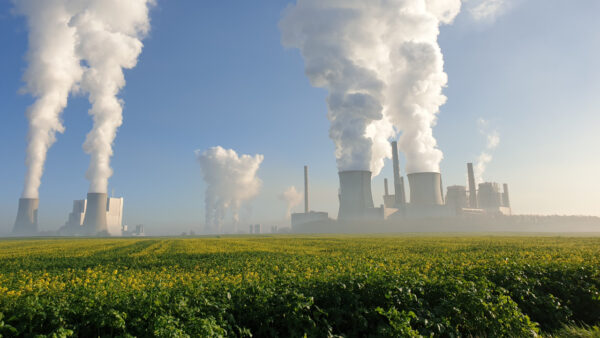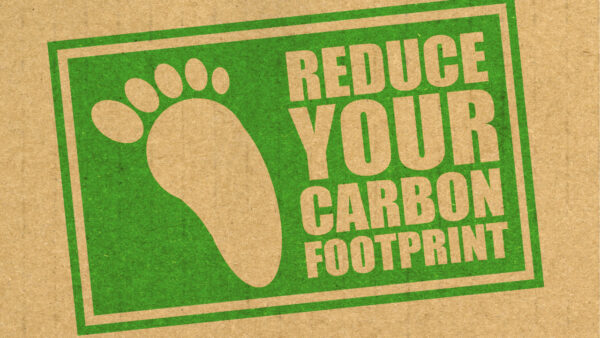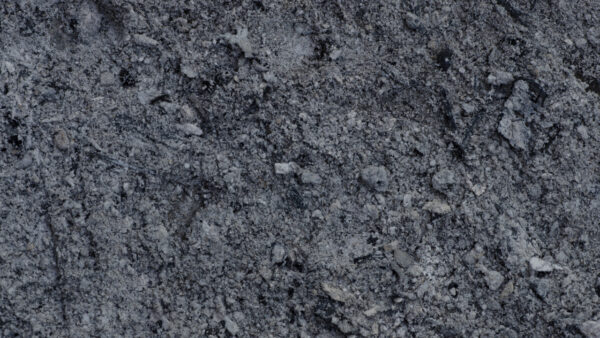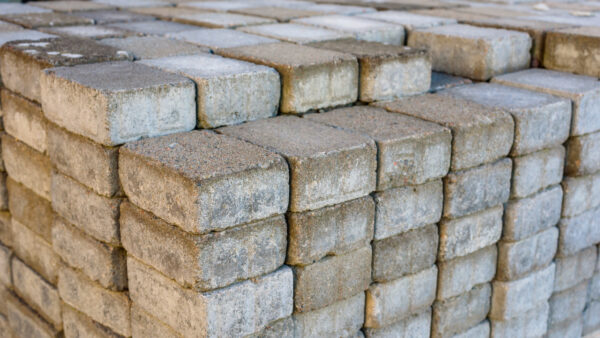Ever since the revolution in construction sector took place and cement was discovered, the road to progression and research seems to never end anytime soon. Different construction materials were discovered over time by iterative testing and research methods. As a result, we, humans found out ways to customize our living.
However, it is noteworthy that not all construction materials proved to be eco-friendly; rather some materials were found to have a detrimental effect on the environment. This urged the need to find out sustainable construction practices and this is where the concept of green concrete surfaced.
Green concrete is a step ahead to sustainable and environment-friendly construction practices. The term “green” signifies that this type of concrete is manufactured as an attempt to save the environment from malignant human practices around the world.
So, what actually is green concrete and is it actually green in color? Well, the answer to the first question is that green concrete is a type made from concrete wastes or other materials that are eco-friendly and sustainable.
Around the world, we see many demolition practices wherein concrete structures are dismantled and thrown away in landfills, just to coerce the natural environment. However, recently, researchers have discovered a method to utilize the demolition waste and make it less deadly for the environment.
Table of Contents
History of Green Concrete
The emission of carbon dioxide accounts for the major faction of contributors towards environmental degradation and undeniably, cement (or rather the entire construction industry, in general) is accountable for this. This is because cement is not an environment-friendly construction material.
The growth of the construction industry with the passage of time is because the cement-based products performed excellently in terms of strength, and durability. With reinforced concrete emerging at the surface as a game-changer, the construction sector progressed by leaps and bounds.
This is because concrete is a versatile material and builders claimed it to be the heart and soul of construction works. However, the harmful impact it has had on the environment gained momentum in the 1970s when growing concern about its impact compelled researchers to come up with sustainable approaches in construction works.
It was found that a potential solution to end environment-related grievances was to cut down the use of Portland cement. Alternative materials to replace cement were worked upon and a French engineer Joseph Davidovits in 1970s came up with his idea of geopolymer concrete. The crux of his work was that an alkali-activated binder obtained from industrial waste materials (slag, ashes, etc.) can be used to replace cement in concrete. These binders reduce the carbon dioxide emissions and the carbon footprint in totality.
Geopolymer concrete was identified as one such method that contributed to sustainable construction and therein, researchers found that any material that can help replace cement in concrete, while still performing the function of a binding agent, will produce a concrete termed as green concrete.
Since then, the quest of researchers to explore new materials that can replace cement for environmental benefits is never to be slaked. Even now, new researches are being conducted every year and a wide range of green concrete mixes can be developed, each possessing unique characteristics while promising structural strength, integrity and durability.
What is Green Concrete?
Green concrete, also called “sustainable concrete” or “eco-friendly concrete” is also a type of concrete prepared by mixing sustainable materials as a replacement for cement with other ingredients being more or less the same as conventional concrete.
The aim of bringing into limelight this type of concrete is to mitigate the harmful effects of conventionally-manufactured concrete on the environment. Let us discuss the types of green concrete that have been manufactured to date and more research is in the pipeline.
-
Alternative Cementitious Materials
In concrete, the main ingredient that imparts strength through binding action is Portland cement. The hydration reaction of cement produces calcium silicate hydrate (CSH) gel and calcium hydroxide (CH). The latter is a superfluous product that is paltry and unwanted; however, CH is consumed to produce CSH, which is the main product of hydration that provides the promised strength to the matrix.
Greater is the quantity of CSH produced, better is the quality of the final product. Given this, we can say that the main purpose of a cementing material (just like cement) is to bind together other ingredients of concrete and impart strength to the hardened concrete.
Research has shown that some materials other than cement, such as fly ash, silica fumes, bagasse ash, etc. can be used to fully or partially replace cement in concrete and perform the function of a binder while imparting strength. These cementitious materials are called supplementary cementitious materials.
-
Replacement of Cement by Fly Ash
Fly ash is a by-product of coal burned power plants. It is a pozzolanic material that also possesses cementitious properties. In concrete manufacturing, fly ash can be used to partially replace cement to get reduced environmental impact, economize your concrete and also to get improved performance in terms of workability, durability, and strength.
-
Replacement of Cement by Silica Fumes
Silica fume (also called condensed silica or micro-silica) is very fine, non-crystalline silica produced as a by-product of the production of elemental silicon or alloys containing silicon.
The high pozzolanic activity of silica fume is used to improve mortar and concrete. It reduces the permeability of concrete and diffusion of chlorides, which substantially enhances durability to corrosion provided that adequate curing is provided.
-
Replacement of Cement by Sugarcane Bagasse Ash
Bagasse ash is a by-product of the sugarcane industry. It is rich in silica and can effectively replace cement in concrete.
-
Replacement of Cement by Slag
Slags are by-products of the metallurgical industry and are regarded as low heat of hydration cements. They can be used to partially replace cement in the concrete and contribute to sustainable or green construction practices.
-
Recycled Aggregates
Recycled aggregates can be used to produce recycled aggregate concrete (RAC) which is a type of green concrete. RAC production has proved to be an effective means of waste management as construction and demolition bulk proliferates each day.

Concrete demolition waste can be used to extract recycled concrete aggregates
The stripping away of hundreds of buildings each day generates demolition waste that is dispensed away in landfills and it has a harmful impact on our natural environment. The idea of utilizing this waste concrete has produced effective in reducing the consumption of natural resources.
Recycled aggregates are obtained by crushing the demolished concrete structures and extracting concrete aggregates out of them. These recycled aggregates can again be used to make new or fresh concrete. This type of green concrete proves to be advantageous in terms of reducing the consumption of natural resources to manufacture concrete.
Key Features of Green Concrete
In a nutshell, green concrete targets sustainability by brining into use ecofriendly raw materials for concrete production so that our natural environment does not have to bear the consequences of human activities.
Some of the striking features of green concrete that are self-explanatory in terms why its use if growing and researchers are putting more efforts in further exploring environment-friendly materials.
- Green concrete aims at reducing the carbon footprint which is one of the global targets set by the environmentalists in conjunction with those stakeholders that are responsible for global carbon dioxide emissions. This can be achieved by partial or complete replacement of cement with alternative cementitious materials as explained before.
- Green concrete also promotes recycling of used material to conserve natural resources. For instance, recycled concrete aggregates can be obtained from dismantled structures and they can be utilized in making recycled aggregate concrete which can be used in pavers, sidewalks, etc.
- Green concrete is energy-efficient and its production can be achieved at low energy or using renewable energy sources.
- It is a durable alternative to conventional concrete. If properly designed, constructed and maintained, green concrete structures can serve their purpose for their designed service life.
- The production of green concrete also aims at waste management; it convinces the construction sector that the production of newer materials can be also be achieved by not disregarding or by utilizing what we consider as “demolition waste”.
How can Green Concrete be manufactured?
The manufacturing process of green concrete is more or less the same as that of conventional concrete. This means that the only differing factor is the composition or raw material source. The purpose of raw materials (even the ones replaced in conventional concrete to form green concrete) also remains the same.
The design and manufacture of green concrete should follow the technique of “reduce, reuse and recycle”. The alternative or sustainable raw materials include some low-carbon cementitious binder, partially or fully replaced by cement, recycled coarse and fine aggregates, some admixture (if required) and water.
The materials are procured in the desired quantity and mixed in a concrete mixer depending upon the size of your project. Sustainable production practices must be used to reduce the environmental impact of concrete production.
The manufactured concrete is placed into the formwork or mold and compacted. Finally, it is finished off and cured for an appropriate duration for it to gain strength.
Green Concrete vs Conventional Concrete; What is the Difference?
The conventional concrete and green concrete share resemblance in the purpose they serve and their mechanical properties to some extent. However, they differ mostly in their composition and the source of raw materials that make up each.
Following are some key differences between conventional and green concrete that you be aware of;
- Green concrete uses alternative raw materials that aim at providing sustainability in construction and reduced impact on ecology and environment. On the contrary, conventional concrete uses Portland cement which contributes a great deal to the global carbon dioxide emissions.
- The production of green concrete is energy-efficient and may even be carried out using renewable energy sources and water conservation methods. The latter can be achieved by using low-water mixes or water recycling systems.
- The carbon footprint of conventional is very large in comparison to green concrete. In fact, the primary purpose of switching to cementitious alternatives is to reduce the carbon footprint and go green.
- The compressive strength of green concrete is normally less than that of conventional concrete. However, its strength can be augmented using some high-performance materials.
- The durability of green concrete is comparable to that of conventional concrete. However, when recycled aggregates are used, the performance of green concrete cannot be predicted with hundred percent accuracy.
- The costs incurred while going for green concrete might push you to the back seat, however, the reduced maintenance cost and the aim of saving our planet from environmental disasters will make you go green.
Applications of Green Concrete
Just like conventional concrete, green concrete also has a wide range of structural and non-structural applications.
- Green concrete can be used in the construction of residential, commercial and industrial building components. It can be used to cast concrete foundations, walls, slabs, floors, etc.
- The utilization of green concrete made from recycled aggregates can be made by constructing pavements, sidewalks, concrete pavers, etc. If alternative cementitious materials are used, green concrete pavements can also be constructed to bear more load.
- Green concrete also finds its application in the construction of bridge components in substructure and superstructure. These may include bridge deck, transom beams, diaphragm, or other supporting structures. However, the cementitious material is partially replaced with cement and it should provide the required strength in conjunction with cement. For large structures, recycled aggregates are not a viable option because they are inherently weak and may not provide very high compressive strength as is required in large concrete structures.
- Green concrete may also be used in the construction of structures in contact with water. These include dams, water treatment plants, etc.
- It can also be used for upgrading your landscape and making an aesthetic outdoor. Apart from that, it can also be used in garden pathways and retaining walls.
- With green concrete, you may go for sustainable infrastructure such as green roofs and walls, solar energy systems, rainwater harvesting systems, etc., all of which contribute to keeping you closer to the natural environment and keeping it intact through your actions.
Advantages of Green Concrete
Green concrete construction is a ground-breaking technique for sure. It offers a plethora of advantages and we shall walk through these one by one.
- The major advantage of green concrete is the reduced carbon footprint that results due to a decrement in the global carbon dioxide emissions. Therefore, it has less negative impact on our natural environment unlike traditional concrete.
- It also provides energy-efficient methods of construction that help conserve natural resources.
- Green concrete structures offer durability and longevity. They also require less maintenance.
- Green concrete also aims at utilizing the construction and demolition (C&D) waste. This means that you do not have to dump the building waste, rather, you can make a utilization out of it.
- Keeping maintenance costs in consideration, green concrete can be cost-effective to some extent.
Drawbacks of Using Green Concrete
While green concrete offers advantages when it comes to environmental compatibility, if also has some drawbacks as discussed below;
- The performance of green concrete cannot be accurately predicted if you are using recycled aggregates or other recycled materials. This is because recycled aggregates are obtained from crushed concrete and the individual aggregate particle may comprise solid mass from hardened cement matrix or stone aggregate particle or both. If it is a particle from matrix alone, it will not be able to take too much load and the structural member will show cracking at lesser loads. Therefore, specialized knowledge of materials and their performance is the preliminary requirement of the design process, and in case of green concrete, performance evaluation of materials might be a challenging task.
- The compressive strength offered by green concrete is lesser than that of conventional concrete. Even if admixtures are added to improve the concrete strength, this seems to be a costly option in most of the cases. This limits the use of green concrete in certain applications such as high-rise buildings, multi-story construction, etc.
- The availability of recycled aggregates is also limited and if the construction site is located away from where the aggregates can be procured, huge transportation costs are likely to be incurred.
- The production of fly ash or other forms of ashes to be used as cementitious material by partially replacing cement, is not an environment-friendly practice and we still rely on fossil fuels for their production.
Cost Comparison of Green Concrete and Conventional Concrete
A number of factors affect the overall cost of green and conventional concrete. These factors are discussed herewith.
- In case of conventional concrete, you might be able to procure the raw materials at a nearby location to where your construction site is. However, for green concrete, the availability is not only limited in quantity but also confined to specific locations. Therefore, more transportation costs are likely to be incurred if you go for green concrete.
- In some cases, the production process of green concrete can prove to be costly because of the used of specialized equipment and techniques which is not the case in general for traditional concrete production.
- The application of green or conventional concrete may also affect their costs. Low strength green concrete cannot be compared cost-wise with conventional concrete with fairly high strength. This is because the former cannot be used for massive structures such as high-rise buildings where conventional concrete (though it may be tailored as per need) is made a preference.
- The maintenance cost of green concrete is less in comparison to conventional concrete and this offers long-term benefits in its use.
Frequently Asked Questions (FAQs)
What are pozzolanic materials?
As a result of the hydration process in cement, two important products namely calcium silicate hydrate (CSH) gel and calcium hydroxide (CH) are formed. The former compound contributes to the concrete’s strength whereas the latter is considered a weakness in the concrete.
If, by any means, we convert the calcium hydroxide into a cementitious compound, it can be effectively be brought to rather contribute to the concrete’s strength. This can be achieved by using pozzolans.
A pozzolan is a siliceous or alumino-siliceous material that chemically reacts with the calcium hydroxide released by the hydration of Portland cement to form compounds possessing cementing properties.
Pozzolans can be natural (such as volcanic ash, metakaolin, rice husk, etc.) or obtained as a by-product of any industrial process (such as silica fume, fly ash, etc.). Nevertheless, the use of pozzolanic materials has contributed significantly in augmenting concrete’s strength and durability.

Rice husk can be used in concrete as a natural pozzolan
What is meant by carbon footprint?
Carbon footprint is a measure of the amount of greenhouse gases produced over a specified period of time by any individual, or organization. The greenhouse gases may entail carbon dioxide, methane, or other, however, the main contributor to greenhouse emissions is carbon dioxide.
Carbon footprint is measured in units of carbon dioxide equivalent (CO2e). The magnitude of carbon footprint unveils the number of human attempts that have had a deleterious impact on our natural environment.
The assessment of carbon footprint is made by assessing the carbon dioxide emissions that a particular project will result in. Having done this, we have standard emission factors for various activities or products which can be used to calculate the carbon footprint.
What are the harmful effects of increased carbon footprint?
A major concern of rising carbon footprints is the rapid climate change it is causing. Seasons are experiences a rapid shift and same goes for the temperature intensities. In one part of the Earth, people are experiencing extremely cold weather at one point in time and then there comes extremely hot weather at some other point of time.
Rapid climate change is also leading to rapid melting of glaciers. As a consequence, the chances of flooding have increased. There are floods in one part and drought in the other and things are getting no better. Environmentalists fear that if the global greenhouse emissions are not curtailed, the planet will become a challenging place to thrive on and sustain.
Apart from the impact on climate, increased carbon footprint also leads to different forms of pollution such as air pollution, water pollution, etc. All the forms of inevitable happenings are a form of human-induced disasters that become uncontrollable once we begin to take their significance into account.
Can we entirely switch to green concrete?
A theoretical answer to this question could be a yes, however, for practical reasons, it is not possible to switch to green concrete for all our concrete construction works. This is because firstly, the ingredients that make up green concrete are not available abundantly and secondly, their spatial distribution is limited and can only be procured from certain locations.
However, a plausible options of introducing sustainability in the construction works is to increase the eco-friendly materials and go for green concrete structures as much as possible. Green concrete can also be reinforced with cost-effective materials such as bamboo, plant-based fibers, recycled steel, etc.
How much strength can be attained using green concrete?
The maximum strength achievable using green concrete depends upon the concrete mix design, the sustainable alternative material used and the purpose a concrete structure has to serve. For higher targeted strengths, green concrete just like conventional concrete, is reinforced using either natural materials or steel.
If green concrete is reinforced, higher strength can be achieved comparable to that of conventional concrete.
















